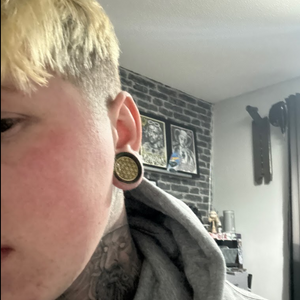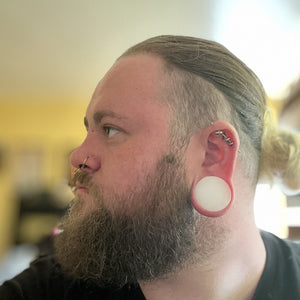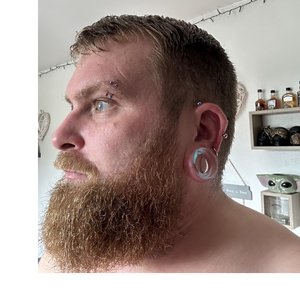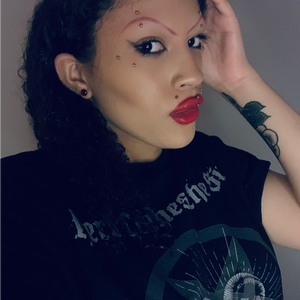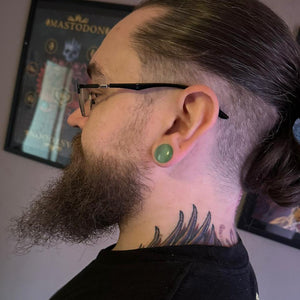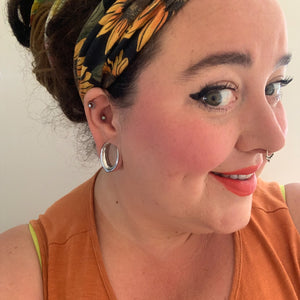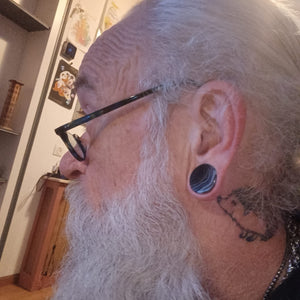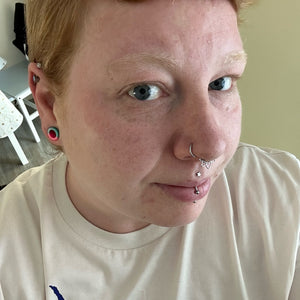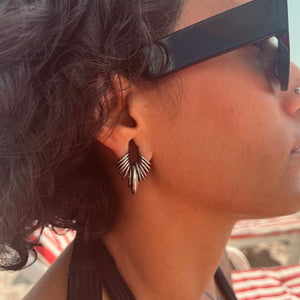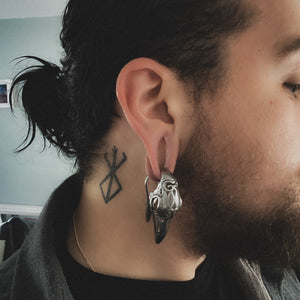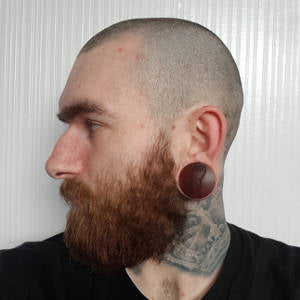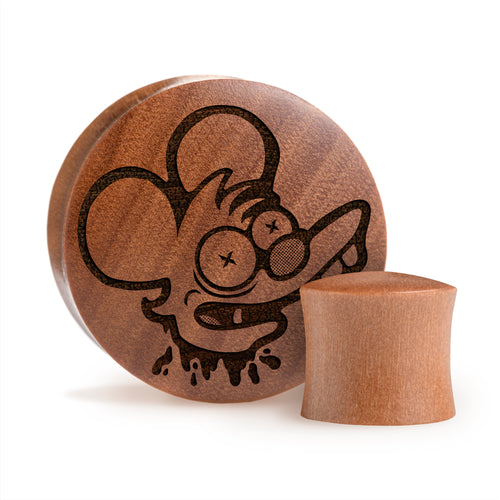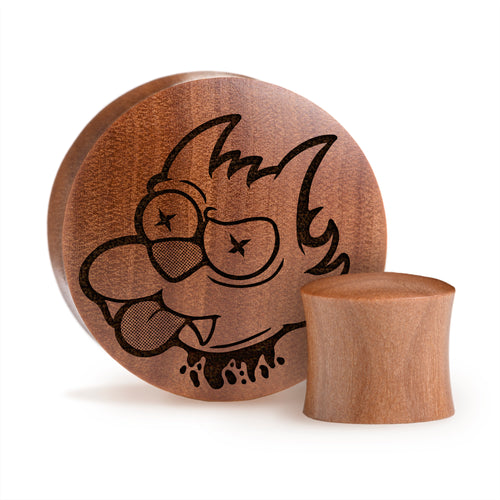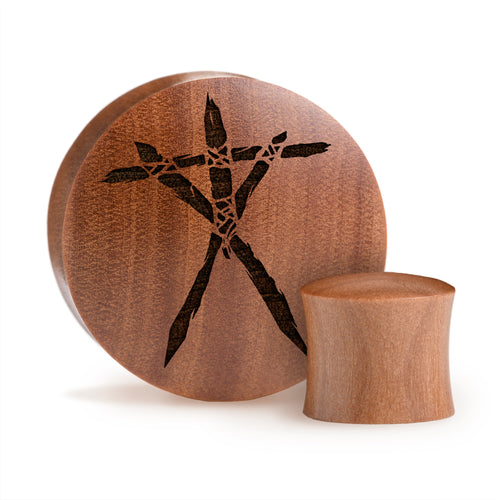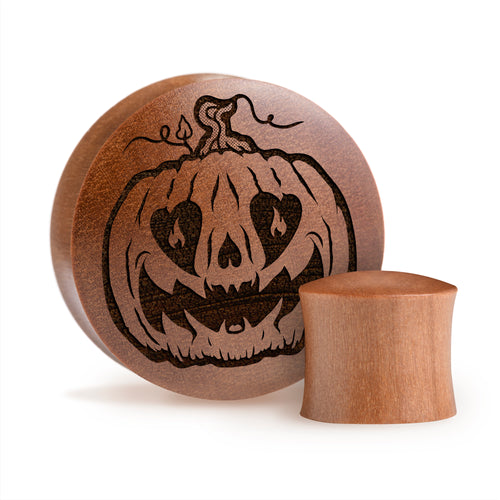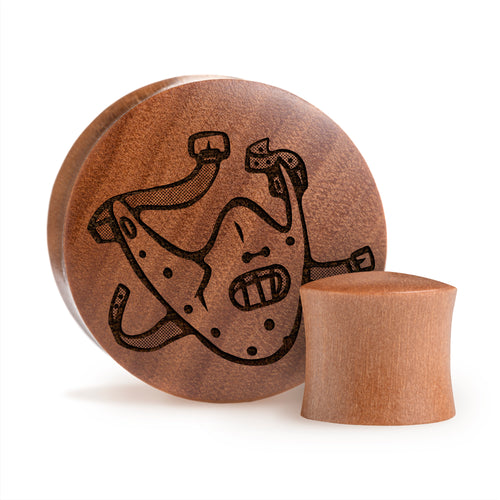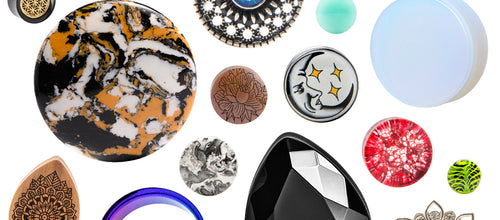Plugs & Tunnels

Black Silicone Tunnel / Plug / Gauge
Black Silicone Eyelet Tunnel / Plug / Gauge
Black Solid Silicone Plug / Gauge
White Silicone Tunnel / Plug / Gauge
Amethyst Plug / Gauge
Glass Opalite Plug / Gauge
Rose Quartz Plug / Gauge
Plugs
Plugs are a popular type of jewelry for ear stretching body modifications that are found around the world. They are a way to express your unique style, which is why we strive to offer one of the best online collections of plugs and tunnel plugs with custom and unusual designs. So you don’t feel like you’re stuck buying what everyone else has! You can stand out.
Shop our selection of plugs and gauges
At customplugs.com, you’ll find a huge range of plugs for ears including stone plugs, wooden plugs, and precious stones! We also have ear tapers and ear stretching kits to get you to the desired stretch size.
We have been creating new designs for plugs for over ten years, and we pick only the best materials and techniques to ensure our tunnel plugs and plugs last a long time whilst looking great!
What sizes do the plugs and gauges come in?
We stock all the regular plug sizes, so you can be sure you’ll find ear gauges that fit well. All our sizes are listed in imperial and metric sizes to make it easier to choose. We have two sizing formats:
The “G” sizes: These are used for the smaller sizes, referred to as gauge sizes. They start at the smallest size that’s used for traditional piercings and stop at the 00g sizes, which is 10 millimetres. Even though it’s rarely used for these sizes, for easier comparison, we’re going to be putting fraction inch sizes here as well. The whole range includes:
18g–1.0 mm–5/128" 16g–1.2 mm–3/64" 14g–1.6 mm–1/16" 12g–2 mm–5/64" 10g–2.4 mm–3/32" 8g–3.2 mm–1/8" 6g–4 mm–5/32" 4g–5 mm–3/16" 2g–6 mm–1/4" 0g–8 mm–5/16" 00g–10 mm–3/8"
Fraction “inch” sizes: They start right after 00g and are written as a fraction of an inch. This sizing format is used from 7/16" all the way to the largest 2" size. The whole range includes:
7/16"–11 mm 1/2"–12mm 9/16"–14 mm 5/8"–16 mm 3/4" –19 mm 7/8" –22 mm 1" –25 mm 1 7/64"–28 mm 1 1/8"–29 mm 1 3/16"–30 mm 1 1/4"–32 mm 1 11/32"–34 mm 1 27/64"–36 mm 1 1/2"–38 mm 1–9/16"–40 mm 1 21/32"–42 mm 1 3/4"–44 mm 1 13/16"–46 mm 1 27/32"–47 mm 1 7/8"–48 mm 2"–50 mm
If you’re just starting out, you might be confused about sizing conventions in the world of ear stretching, particularly the “g” sizes where the smaller the number, the larger the piercing. This is exactly why we list all our plugs in millimetres too, so you can be sure you’re looking at the right size.
For a full overview, check out our ear stretching sizes chart.
What materials do the plugs and gauges come in?
In our online shop, you’ll find metallic plugs made from surgical steel, gold, and rose gold. You can also buy tunnels and ear gauges made of natural materials, such as stone plugs and wooden plugs.
For lightweight options, you can choose between glass plugs, silicone plugs and acrylic plugs. Acrylic and silicone plugs, in particular, give you a lot of flexibility when picking out colours, designs, and patterns, while our glass and wooden plugs give you the option to customise them with your own designs, dates, and quotes.
What type of plugs for ears should I buy?
Each material has its own pros and cons to consider. Tapers and ear stretching kits are often made from stainless steel or glass since it is non-porous and you can sterilise it in an autoclave, making it perfect for stretching.
Glass is a popular choice as it can be made in a variety of brilliant colours, designs, and patterns. It’s very light compared to metal plugs and is safe for healing and healed ears. The only downside is that if you drop your glass plugs, they have a higher chance of breaking (so make sure you avoid glass plugs when doing sports or activities.)
Stone, precious stones, and wood are the most common organic materials used to create plugs and plug tunnels, being much lighter than metal. But should only be worn on fully healed ears because they are porous materials, so dirt and debris, and therefore bacteria can stick onto them, causing irritation and infection on healing earlobes. Plugs and tunnel plugs made from natural materials (like wood plugs and some stone plugs) are also not water-resistant, so make sure to remove them when going for a swim or taking a shower or they’ll wear quicker.
Acrylic is a lightweight type of plastic that’s used to create colourful designs and patterns on gauges and tunnel plugs, and can even pass for stone or glass. You can put various images and patterns under it and even create glow-in-the-dark plugs. It’s a porous material, however, so it’s only safe to use on healed ears, and even then, some people might have mild irritation when wearing acrylic plugs for long stretches of time.
Silicone is another popular option, being the softest plugs and tunnel plugs that can be worn overnight, with a helmet, for sports, and when you just need a bit of a break from other plug materials. While not porous, silicone plugs tends to attract dust more because the surface is “stickier” than other materials, which makes it a poor choice for healing ears.
Titanium is another type of metal used for plugs for ears and is preferred by those who have nickel allergies, as it’s completely nickel-free. As another bonus, it’s much lighter than steel and can be coloured. It’s a material that works well for healing and healed earlobes.
Our best-selling materials are currently silicone and stones like synthetic opalite & amethyst!
What shapes do our plugs come in?
We offer a huge range of plugs shapes The most common are full and circular plugs for ears, but we also have teardrop plugs, tunnels (hollow), and the more unusual saddle, heart, triangle, spiral gauges, and square shapes.
Some shapes are limited to specific materials to ensure they remain comfortable to wear, but we also sell tapers, and have a big stock of ear weights that are currently in high demand.
Have a question about plugs and gauges?
Have a question about our plugs? Drop us a quick message and we’ll get in touch within a day or so to see what we can do!

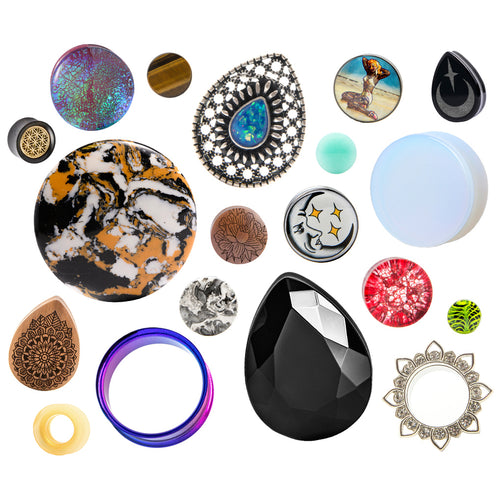

-v1657710003014.jpg?512x640)











-v1659606134061.JPG?5760x3840)



















